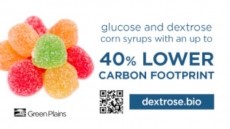Wild targets natural colours market with kiwi green
natural brilliant green kiwi colour for the food and drink
industry.
The German flavours and colours firm says that through a special plant extraction process, it has achieved a natural green colour that is heat and light stable for most applications.
"The product name Kiwi Green describes the colour of the plant extract, although it is derived from stinging nettle and spinach," said the company in a press statement. "Many applications remain brilliantly green even when exposed to heat and light."
In addition, the product's low viscosity allows for easy processing.
The natural colour market has experienced strong growth over recent years thanks to the functional food trend and a shift away from synthetic colours as consumers begin to assume more and more that all E-numbers are unhealthy.
Indeed, this is an increasingly important consideration for food makers. A UK survey of 1,000 people commissioned by Razor Public Relations into the public's perception of food risk reveals that over a quarter of consumers (27 per cent) considers food to be more risky now, compared with a year ago.
While 25 per cent said they were worried about additives, 12 per cent claimed to be concerned about harmful ingredients, according to the study.
Tapping into this trend, Kiwi Green can be labelled as "colouring extract from plants (stinging nettle, spinach)" without the need of E-number within the European Union. In the US however, Kiwi Green can currently only be used with certain applications.
Wild has tailored the process for several product requirements, and Kiwi Green is available in a number of colour nuances and formulations. The company claims that it is suitable for colouring candy, cereals, ice cream as well as dairy products, fat fillings and coatings.
Importantly, the plant extract offers a neutral taste, thus enabling it To be used in the colouring of sensitive products.
Formulations for special product requirements are also available. For example, Kiwi Green for foam products has been formulated so that it will not influence the final product's structure.
Water-soluble emulsions and oil soluble product variations are also available for respective applications as well as standardised quality powders.
The launch should also help consolidate the company's general position in a difficult, though lucrative, industry. According to Frost & Sullivan, the €819.9 million European and US fruit and vegetable extracts and powders market is on course to grow 4.5 per cent annually, reaching €1.07 billion by 2009.
















